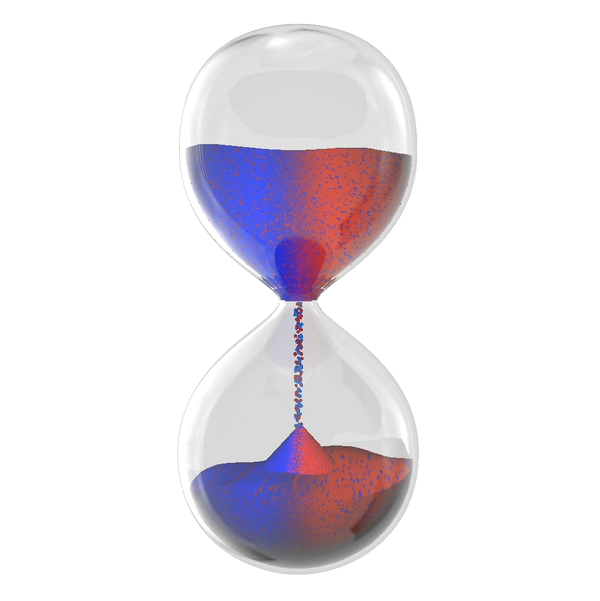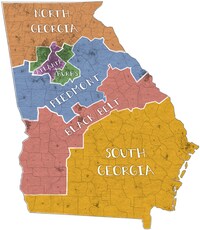Advertisement
On Politics With Lisa Lerer
Here’s what the country’s huge early turnout can tell us, and what it can’t.
Hi. Welcome to On Politics, your guide to the day in national politics. I’m Lisa Lerer, your host.
Sign up here to get On Politics in your inbox every weekday.

As loyal readers of this newsletter know, I have a doomscrolling problem. My bad-news bingeing often kicks in late at night, just in time to cannibalize good sleep with the blue light of disaster.
But lately, I’ve found a healthier — though admittedly nerdy — online addiction: refreshing the U.S. Elections Project website.
Run by Michael McDonald, an expert on early voting, the website has become a must-bookmark stop for everyone who obsesses about politics, offering frequently updated data on early voting returns across the country.
As of our publication time tonight, an astounding 42,143,836 Americans have voted, according to the tracker.
That’s around 30 percent of the total number of votes cast in the 2016 election — and we still have 13 days until Election Day.
The numbers are striking: In Texas, the state currently leading the early vote count, more ballots have already been cast (5.3 million) than Donald Trump pulled in there four years ago (4.7 million).
No matter your political affiliation, the number of people voting feels like a beacon of democracy in a very dark time.
Despite a public health crisis, economic hardship and a president who frequently tries to undercut the legitimacy of our electoral system, voters are still finding ways to cast their ballots. In many states, that has meant waiting in long lines, navigating a confusing election infrastructure and overcoming some obnoxious and even menacing attempts at voter intimidation.
The huge early turnout is “primarily a good news story,” said Mr. McDonald, a political science professor at the University of Florida. “It’s helping election officials because it helps them manage the election better, and it’s helping voters because if they do have a problem with their ballot there’s more time.”
So what do all of these early votes tell us about the state of the race? We are quite likely headed for record-breaking turnout, a dynamic we’ve seen in elections throughout the Trump era (the 2018 midterms had the highest-percentage turnout in a century). As in those past elections, much of the vote is powered by Democratic enthusiasm.
In states that report party registration, 52 percent of the ballots have been cast by Democrats, 26 percent by Republicans and 21 percent by people with no party affiliation, according to Mr. McDonald’s analysis.
Even as Republicans urged their supporters to vote early, the president’s sustained disinformation campaign casting voting by mail as rife with fraud probably depressed early turnout among his supporters. Last month, an ABC News/Washington Post poll found that Mr. Trump led by 19 percentage points among people who intended to vote on Election Day, while Joe Biden had more than a 2-to-1 advantage, 67 percent to 31 percent, among those who planned to vote before then.
Mr. Trump’s campaign is now counting on what he calls a “red wave” on Election Day that will overcome the Democrats’ apparent early voting advantage.
This is a risky strategy. Even when we aren’t facing a pandemic, a lot can happen to depress turnout on Election Day. Like heavy rain. Or long lines. Or a power outage.
Tactically, Mr. Biden’s organizers are better able to focus their time on finding supporters who haven’t yet cast their ballots, since in many states they know who has already gone to the polls.
Still, I’d caution against interpreting the early Democratic turnout as predictive. There’s no extra credit for voting early. A vote on Election Day counts the same as one cast before.
Just because Democrats have an advantage now doesn’t mean they’ll maintain it. Though there’s no sign that the dynamics of the race are shifting significantly in his favor, Mr. Trump’s “red wave” is not impossible.
And, of course, we see only the registration data of early voters — not who captures the votes. Not every voter registered as a Democrat will cast a ballot for Mr. Biden.
We’ll have to wait until Election Day — or perhaps the days that follow — to learn who will become our next president. But for now, at least, there’s something to break the doomscroll cycle.
Drop us a line!
We want to hear from our readers. Have a question? We’ll try to answer it. Have a comment? We’re all ears. Email us at onpolitics@nytimes.com.
Election 2020 ›
What You Need to Know About Voting
- How to Vote: Many voting rules have changed this year, making it a little trickier to figure out how to cast your ballot. Here’s a state-by-state guide to make sure your vote is counted.
- Three Main Ways to Vote: We may be in the midst of a pandemic, but whether you vote in person on Election Day, a few weeks early, or prefer to mail in your ballot this year, it can still be a straightforward process.
- Do You Still Have Time?: Voters in 35 states can request ballots so close to Election Day that it may not be feasible for their ballots to be mailed to them and sent back to election officials in time to be counted. Here’s a list of states where it’s risky to procrastinate.
- Fact-Checking the Falsehoods: Voters are facing a deluge of misinformation about voting by mail, some prompted by the president. Here’s the truth about absentee ballots.
By Isabella Grullón Paz and Maggie Astor
Millions of voters have begun casting ballots well before Election Day. In many states that offer in-person early voting, hourlong lines have wrapped around blocks at voting locations and turnout rates are smashing records in some places. The addition of expanded mail-in voting options in many states has also created a surge in voters casting their ballots ahead of Nov. 3.
But given all of the ways to vote this year, it can be a little confusing, so we’ve been answering your questions. Here’s our full F.A.Q. on the election, and here’s where to submit a question.
When does early in-person voting start?
In many states, early voting is already underway. The first polls opened in mid-September, and around 11.3 million people have already voted this way.
You can find your state’s options here.
Where do I vote?
Each state has an online portal where you can look up your polling location. You can find the link to your state’s portal through our voting guide; just select your state, your registration status and the “in-person” option.
Some states have different locations for early voting and for regular in-person voting on Election Day, so always make sure to double-check by contacting the election office in your county.
Do I need identification to vote?
It depends on where you live. Some states require photo identification, some require proof of residence but not a photo, and some require no identification at all.
You can look up your state’s requirements in our voting guide.
When are mail-in ballot deadlines?
Another way to vote before Election Day is through the mail. Every state has different deadlines for requesting and returning ballots. You can find yours here.
In some states, election officials will accept ballots received after Election Day as long as they were postmarked by Election Day. But there have already been delays and other snags in sending out mail-in ballots, and some of the extended deadlines could be overturned in court.
Given the uncertainty, it’s best to request and submit your ballot as early as possible.
Do I need postage to mail my ballot?
Check with your local election officials. The answer can differ depending on where you live and how much your ballot weighs.
Several states, including Massachusetts, Pennsylvania and New Jersey, are providing postage-paid return envelopes for ballots this year, in addition to the 17 states where that was already required by law. In other states, the decision comes down to local officials: Voters in Chicago are receiving prepaid return envelopes, for example, but those elsewhere in Illinois may have to pay over $1 in postage.
How do I know if my ballot was received and counted?
Most states have a website where you can track your mail-in ballot. You can find the link for your state in our voting guide.
Can I vote in person if I requested a mail-in ballot?
It depends where you live. Generally speaking, you can take your mail-in ballot to your designated polling place and exchange it for an in-person ballot. Some states let you complete your absentee ballot in person and hand it in, or fill out a provisional ballot. But every state has different rules, so be sure to check with your local election officials.
One thing to be very clear on: You cannot vote twice. Intentionally doing so is a felony, and every state has safeguards in place to prevent it.
When will we know the results?
Votes cast in person on Election Day should be counted that night, but the timeline for counting mail-in ballots will vary by state. If the question is “when will we know who won,” it depends how close the race is. If it’s a blowout, we might be able to tell on election night. If the race is close, though, be ready to wait.
Ask us your questions about the election, and see more of the answers here.
The president: Master of the dad dance.
Thanks for reading. On Politics is your guide to the political news cycle, delivering clarity from the chaos.
On Politics is also available as a newsletter. Sign up here to get it delivered to your inbox.
Is there anything you think we’re missing? Anything you want to see more of? We’d love to hear from you. Email us at onpolitics@nytimes.com.



